1. IJSF Unofficial Beta-Test
The systems and ship designs for the IJSF indicated below are unofficial beta-test versions and any final version that appears in future GZG publications may be different. Please use these new systems and designs in your battles; your feedback is appreciated.
In particular, please note that this is a very fighter-heavy fleet, and as a result (particularly in large carrier-based engagements) has a tendency to punch above its NPV under the current fighter rules. We are aware of this problem and are working on solutions to it; one that does a decent job is the UF/AFP posted to the GZG list at http://lists.firedrake.org/gzg/200403/msg00286.html.
2. Imperial Japan and the Fleet
2.1. General information
Japanese is the official language of Imperial Japan, although English is so widely used as to be an unofficial second language. The space naval arm of the Japanese military is known as the Teikoku Hoshi no Kaigun (literally Imperial Star Navy); strategists and naval scholars generally refer to it in English as the Imperial Japanese Star Fleet (IJSF). There is no standard prefix for ship names, but a ship is normally formally referred to by its designation and name: Battlecruiser Kesshi. Ships are generally given poetic names rather than being named after specific people or battles.
The IJSF emblem is a rayed bright red, yellow or white circle on a black field. The black field is unique to the IJSF; other arms of the Japanese military, and indeed civilian flag users in Imperial Japan, use a white field (and typically a slightly more muted red).
2.2. History and organisation
The Japanese spacefleet has a very "corporate" feel; apart from those personnel directly exposed to combat, the typical officer comes over more like a career bureaucrat than like a typical military man. The combat arms are another story, however, with a tolerance for eccentricity which is not only greater than that in most of Japanese society but is sometimes greater than that of allied navies. Only one thing matters: competence. Promotion is rapid where ability is proven; some IJSF capital-ship captains are barely out of their teens.
The Japanese spacefleet has inherited the proud traditions of their wet navy fore-runners and their immense fighter wings are the match of any nation. The intimate connections between the corporate and defence forces have seen their fleet be the first to boast many state-of-the-art technologies, such as superior sensors, and immensely powerful weapons, such as the wavegun. The Japanese are said to still carry out ritual farewells before every combat engagement; these events stem from their traditional heavy reliance on fighters which had meant that when they took casualties they could be on particularly devastating scales. This is no longer true as a sizeable proportion of the Japanese fighters is now run by AI; however the rituals of farewell apparently persist none-the-less.
2.3. Ship Design Doctrine
The ships of the IJSF are generally extremely heavily armed with missile racks, fighters and the hyperspatial distortion cannon (a weapon which other powers generally regard as too inefficient for naval use, not to mention hazardous to fighter pilots who fail to keep formation), backed up with extensive beam armament. Thrust levels tend to be moderate or high; hulls are typically weak; armour is generally not used, and screens only on dedicated fighter-carrier units. While most ships carry moderate point-defence suites, it is generally expected that on-board fighters will assist in fighter and missile defence. IJSF ships make extensive use of fighters, down to the battlecruiser class; fleet doctrine emphasises smooth integration of fighters from different squadrons, since in practice this seems to occur quite often.
3. New systems
3.1. Hyperspatial Distortion Cannon
Spinal-mount weapon - can fire within the 30-degree arc centred on the line along which it's mounted (almost always, but not necessarily, directly forward).
It is necessary to plot the firing of an HDC in movement orders. This is because all fire directors and sensors must be shut down to avoid overload. So, during the turn on which a ship is firing an HDC, it may not use PDS or perform any function which requires target identification (no fire-control, no missiles). (As a corollary to this, an HDC may fire even if no fire-control systems are available.) Manoeuvres and fighter launches may be conducted normally; and if a ship has multiple HDCs, they may all be fired on the same turn. Fighter recovery requires sensor use from the firing ship, and therefore may not be conducted. Even if the ship has screens, the arc through which the HDC is firing will usually be considered unscreened; it is necessary to shut down the screens locally to avoid overload.
If the player wishes to maintain system operation while firing an HDC, all outside-pointing systems which are used (fire controls, weapons, screens if the arc through which the HDC is firing is not shut down locally) are considered damaged (as by a threshold check) immediately after the completion of that ship's fire. This is a desperation tactic.
If HDC fire has been plotted, it must be carried out even if it would prove inconvenient to do so.
The HDC is fired during the normal fire phase, when the ship is activated.
Charging - HDCs have an extremely large power requirement and must be charged from other ship systems. The weapon may only be fired every other turn.
An HDC which is damaged (due to threshold check, needle damage, etc.) immediately does damage equal to twice its class number directly to the hull.
The HDC pulse damages every target that the wavefront passes over. On the turn of firing, this will be every target in a triangle, with its apex at the firing ship, a total length of 24MU, and a width of 2MU at its wide end; measure between these points to determine the boundaries of the effect and the targets that take damage. Each succeeding turn, the pulse moves outwards a further 24MU and widens by 2MU; for example, the turn after firing, it covers a trapezoid from range 24MU to 48MU of the firer's initial position, 2MU wide at 24MU and 4MU wide at 48MU. The next turn, the area covers an area 4MU wide at 48MU from the initial position and 6MU wide at 72MU. This progression of areas is the same no matter what class of HDC was fired.
On turns after the one on which it was fired, the HDC pulse does damage immediately before the "Ships Fire" phase.
The wavefront is actually moving at the same time as the ships, fighters etc., so its on-table position during the Ships Move isn't where it is really located at the time. Because of this it only inflicts damage on units those which move through it from its "front" (from in front of the damage template to a position inside it, through its leading face), and those the wavefront itself moves over in the Ships Fire phase, but not on units which move through it from "behind"; they are assumed to be moving behind the wavefront without actually catching up with it. (If a ship moves through the wavefront from behind and then gets caught as the wavefront moves during the Ships Fire phase, it is assumed to have caught up with the wave front instead of just moved behind it.)
Initial damage level of the wavefront is (class x 2) dice; on each turn after firing, this drops by 2 dice.
Damage is done as full dice, not beam dice; it is affected by screens and armour as a Phalon PB (a ship with screen-1 ignores any dice rolling 6; one with screen-2 ignores any rolls of 5-6; armour absorbs damage normally). Any fighters or missiles caught in the template are destroyed automatically.
Mass = 4 for class 1, 12 for class 2, 20 for class 3; in general, (class x 8)-4.
Cost = mass x 3
SSD symbol: 
3.2. Multi-mode fighters
Multi-mode fighters may fight either as attackers or as interceptors in any given turn (to be decided when the group first engages in combat in the turn), at a cost of 7 points per fighter (42 points per group).
4. The ships
4.1. Ninja class Scoutship

|

|
FT1302
34 points, 10 mass
Main Drive 8
2 x Class 1 beam battery, all arcs
FCS
FTL Drive
Weak hull 2 boxes
Names include: Ninja, Amatsukaze, Arashio, Ariake, Asagao, Asashio, Ayanami, Hakaze, Harusame, Hatsume, Hatsushimo, Hatsuyuki, Hayashimo, Hayashio, Hibiki, Hokaze, Kaede, Kaki, Kamikaze, Kasumi, Kishinami, Kuroshia, Maikaze, Matsukaze, Mikatsuki, Minegumo, Mochizuki, Nara, Natsugumo, Natsuzuki, Nenohi, Oboro, Oinami, Oite, Onami, Otake, Sanae, Shigezakura, Shigure, Shikinami, Shiratsuyu, Suzukaze, Tachibana, Takanami, Ume, Uzuki, Wakaba, Wakatsuki, Yoitsuki, Yudachi
4.2. Naginata class Strikeboat

|

|
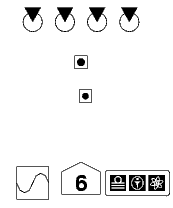
|
FT1322
36 points, 10 mass
Main Drive 6
FCS
2 x Class 2 beam battery (AP/FP/F, F/FS/AS)
FTL Drive
Fragile hull 1 box
Names include: Naginata, Fuyo, Harutsuki, Hayate, Inazuma, Kagero, Katana, Kuwa, Manrikiju, Momi, Momo, Murasame, Sakura, Sandanju, Shirayuki, Shuriken, Sugi, Tachikaze, Tanikaze, Tsuta, Ushio, Yukaze
The Naginata/S variant replaces the two beam batteries with four forward-facing submunition packs.
4.3. Bakemono class Strike Corvette

|

|
FT1303
55 points, 16 mass
Main Drive 6
2 x Submunition Pack, F
Class 2 beam battery, FP/F/FS
PDS
FCS
FTL Drive
Weak hull 3 boxes
Names include: Bakemono, Asagumo, Asanagi, Asashimo, Hatsuharu, Hatsukaze, Keyaki, Minekaze, Naganami, Okinami, Oyashio, Shinonome, Shirakumo, Sumire, Suzutsuki, Tamanami, Terutsuki, Urakaze, Wakatake, Yakaze, Yanagi, Yugure
4.4. Ashigaru class Patrol Frigate

|
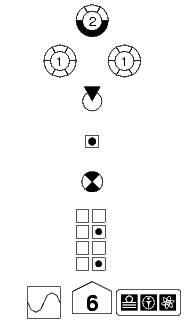
|
FT1304
86 points, 26 mass
Main Drive 6
Class 2 beam battery, FP/F/FS
2 x Class 1 beam battery, all arcs
PDS
FCS
Submunition Pack, F
FTL Drive
Average hull 8 boxes
Names include: Ashigaru, Akatsuki, Akebono, Akigumo, Akikaze, Akishimo, Amagiri, Arare, Enoki, Fumitsuki, Fuyutsuki, Hagi, Hagikaze, Hamakaze, Hasu, Hatsuzuki, Hinoki, Ikazuchi, Iwanami, Karukaya, Kashiwa, Kawakaze, Kazegumo, Kisaragi, Kiyoshimo, Kuretake, Kusunoki, Maki, Makigumo, Matsu, Michishio, Mutsuki, Nagatsuki, Natsushio, Niizuki, Nowake, Numakaze, Okikaze, Sawakaze, Sazanami, Shiranuhi, Take, Tsubaki, Yamagumo, Yamakaze, Yugamo, Yugiri, Yunagi
4.5. Shoya class Sensor Picket

|

|
FT1324
108 points, 26 mass
Main Drive 8
PDS
FCS
Class 1 beam battery, all arcs
FTL Drive
Average hull 8 boxes
Superior Sensors (rated as 2 mass, 30 points)
Names include: Shoya, Asakaze, Fubuki, Hamanami, Hatakaze, Kaya, Minazuki, Nire, Shimotsuki, Tokitsukaze, Uranami, Usugumo, Yayoi, Yukikaze
4.6. Soyokaze class Destroyer

|

|
FT1305
123 points, 36 mass
Main Drive 6
2 x SMR, FP/F/FS
Class 2 beam battery, all arcs
Class 1 beam battery, all arcs
FCS
PDS
FTL Drive
Weak hull 7 boxes
Names include: Soyokaze, Akitsuki, Asagiri, Fujinami, Hanatsuki, Harukaze, Hatsuzakura, Hayanami, Isokaze, Isonami, Kaba, Kashi, Kikutsuki, Kiri, Kiyonami, Kuri, Makinami, Murakumo, Namikaze, Nashi, Nokaze, Oshio, Sagiri, Samidare, Satsuki, Shii, Shimakaze, Shiokaze, Suzunami, Tsuga, Umikaze, Yuzuki
4.7. Arashi class Light Cruiser

|

|
FT1306
203 points, 60 mass
Main Drive 6
3 x Class 2 beam battery (AP/FP/F, F/FS/AS, FP/F/FS)
2 x Class 1 beam battery, all arcs
4 x Submunition Pack, F
2 x FCS
3 x PDS
FTL Drive
Hull 15 boxes SMR, FP/F/FS
Names include: Arashi, Kinu, Kuma, Nagara, Naka, Natori, Noshiro, Oi, Sakawa, Sendai, Tama, Tatsuta, Tenryu, Yara, Yubari, Yura
4.8. Ronin class Patrol Cruiser
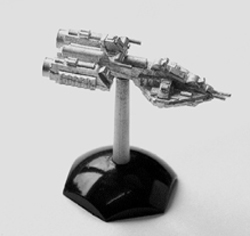
|

|
FT1307
217 points, 64 mass
Main Drive 6
2 x Class 3 beam battery (F/FS, FP/F)
3 x Class 2 beam battery (AP/FP/F, F/FS/AS, FP/F/FS)
2 x Class 1 beam battery, all arcs
2 x FCS
3 x PDS
FTL Drive
Hull 16 boxes
Names include: Ronin, Agano, Aoba, Atago, Chikuma, Furutaka, Isuzu, Jintsu, Kako, Kinugasa, Kiso, Kitagami, Kumano, Kurutaka, Mikuma, Mogami, Myoko, Oyodo, Yahagi
4.9. Samurai class Heavy Cruiser

|

|
FT1308
281 points, 83 mass
Main Drive 6
SMR, FP/F/FS
5 x Submunition Pack, F
2 x Class 3 beam battery (F/FS, FP/F)
2 x Class 2 beam battery (AP/FP/F, F/FS/AS)
2 x Class 1 beam battery, all arcs
2 x FCS
3 x PDS
FTL Drive
Hull 20 boxes
Names include: Samurai, Chokai, Haguro, Maya, Nachi, Suzuya, Takao, Tone
4.10. Kesshi class Battlecruiser

|
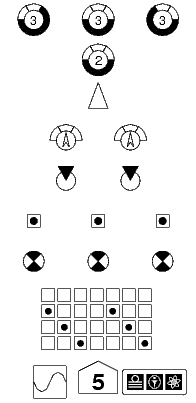
|
FT1309
376 points, 110 mass
Main Drive 5
2 x Submunition Pack, F
3 x Class 3 beam battery (F/FS, FP/F, FP/F/FS)
Class 2 beam battery, FP/F/FS
Fighter Bay
3 x PDS
3 x FCS
2 x SMR, FP/F/FS
FTL Drive
Hull 28 boxes
Names include: Kesshi, Kongo, Hiyei, Nagato, Mutsu
4.11. Yamato class Battleship
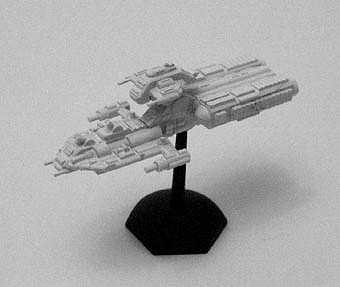
|
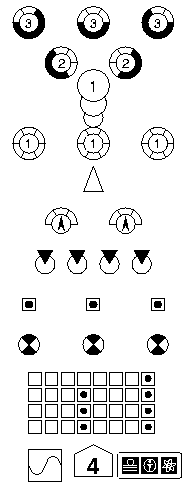
|
FT1310
437 points, 126 mass
Main Drive 4
Class 1 HDC, F
2 x SMR-ER, FP/F/FS
3 x Class 3 beam battery (F/FS, FP/F, FP/F/FS)
2 x Class 2 beam battery (AP/FP/F, F/FS/AS)
3 x Class 1 beam battery, all arcs
4 x Submunition Pack, F
3 x FCS
3 x PDS
Fighter Bay
FTL Drive
Hull 32 boxes
Names include: Yamato, Haruna, Nadesico, Yamashiro
4.12. Musashi class Super Battleship

|

|
FT1311
541 points, 156 mass
Main Drive 4
Class 2 HDC, F
3 x SMR-ER, FP/F/FS
2 x Class 3 beam battery (F/FS, FP/F)
Class 2 beam battery, FP/F/FS
2 x Class 1 beam battery, all arcs
3 x FCS
4 x PDS
4 x Submunition Pack, F
2 x Fighter Bay
FTL Drive
Hull 39 boxes
Names include: Musashi, Kirishima, Hyuga, Fuso
4.13. Shogun class Command Dreadnought

|

|
FT1312
930 points, 263 mass
Main Drive 3
Class 3 HDC, F
4 x SMR, FP/F/FS
6 x Class 3 beam battery (F/FS, FP/F, 2 x AP/FP/F, 2 x F/FS/AS)
4 x Class 2 beam battery (2 x AP/FP/F, 2 x F/FS/AS)
3 x Class 1 beam battery, all arcs
8 x Submunition Pack, F
6 x PDS
4 x Fighter Bay
5 x FCS
FTL Drive
Hull 62 boxes
Names include: Shogun, Ise
4.14. Hiryu class Light Carrier

|

|
FT1313
564 points, 160 mass
Main Drive 4
6 x Fighter Bay
4 x Class 2 beam battery (AP/FP/F, F/FS/AS, 2 x FP/F/FS)
2 x Class 1 beam battery, all arcs
4 x PDS
ADFC
2 x FCS
Screen Generator
FTL Drive
Weak hull 32 boxes
Names include: Hiryu, Chitose, Chiyoda, Chuyo, Hayataka, Jinyo, Kaiyo, Katsuragi, Otaka, Ryuho, Shoho, Shokaku, Soryu, Taiho, Unryu, Unyo, Zuikaku
4.15. Akagi class Supercarrier

|

|
FT1314
960 points, 269 mass
Main Drive 3
10 x Fighter Bay
2 x Screen Generator
7 x PDS
ADFC
SMR-ER, FP/F/FS
6 x Class 2 beam battery (2 x AP/FP/F, 2 x F/FS/AS, 2 x FP/F/FS)
2 x Class 1 beam battery, all arcs
3 x FCS
FTL Drive
Weak hull 54 boxes
Names include: Akagi, Amagi, Hitaka, Hosho, Hoshu, Kaga, Kasagi, Nisshin, Ryujo, Shinano, Zuiho